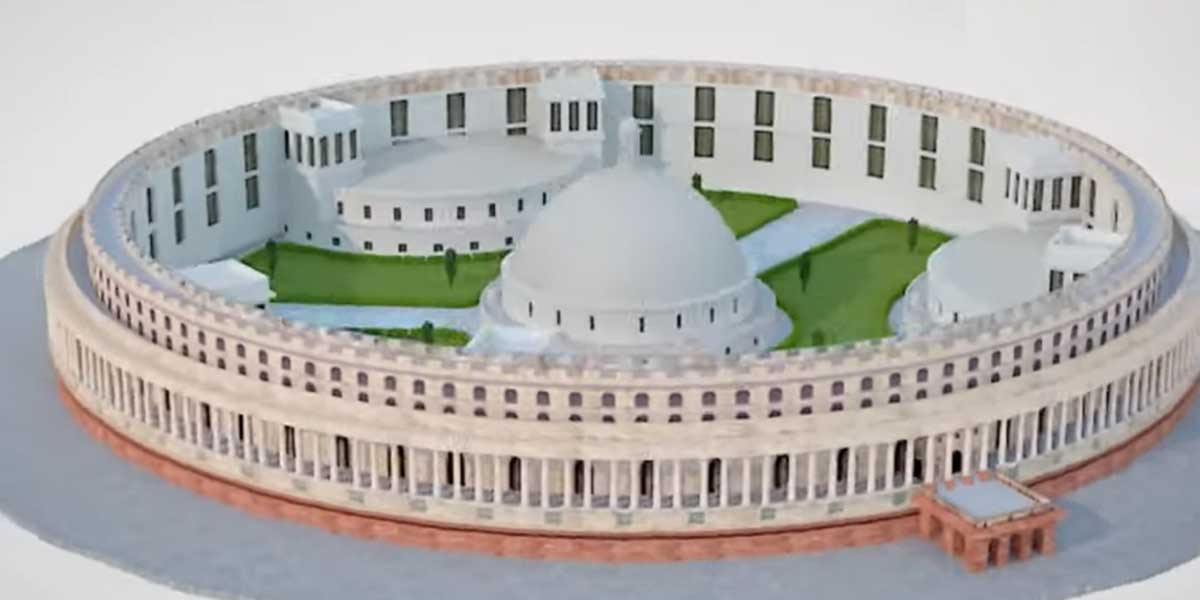
The new parliament building is under construction as part of the Central Vista Redevelopment Project. Spread over the land of 64,500sq.m. in New Delhi, this monument will capture our Indian heritage and highlight the cultural diversity that heralds the journey to become the nation with the greatest democracy in the world.
The demand for the new parliament building started to arise ten years ago due to the dilapidated condition of the existing parliament. Nearly a century old, the existing parliament has numerous problems related to structural issues and space. With the increasing population, the future is to increase the seat for MP and this lacks the space for their housing. Because the building is so old, the structure is outdated. The building lacks security features and cannot withstand an earthquake. Given all these issues, the Indian government started construction of a new parliament building in 2019 along with other projects in New Delhi aimed at refurbishing administrative buildings.
With enhanced features instilling the country's values and culture along with excellent amenities, the new parliament building will be dedicated to the country by the 75th year of independence in 2022, promoting 'Atma Nirbhar Bharat' which is a self-reliant nation stands for. The new parliament will be a triangular structure with a budget of 862 crores. It will be a four-storey building with a capacity of 1,272 MPs; as a result, the seating capacity is 1.5 times greater than the current one. The current parliament building had a maximum of 545 Lok Sabha seats and a maximum of 245 Rajya Sabha seats; while the new parliament building has a maximum of 888 Lok Sabha seats and a maximum of 384 Rajya Sabha seats. The new parliament will house several amenities such as a library, lounge, dining area, several committee rooms and a spacious car park.
For the construction of the new parliament, several experts have come together to create this beautiful monument. The main contractor for the project is TATA Projects Ltd. Architect Bimal Patel will stage the entire planning of the project while the designing architect is an Ahmedabad based firm called HCP Design Planning and Management Pvt Ltd. New Delhi falls into a zone IV earthquake; therefore the building will be an earthquake resistant structure. The building will be strong and have a lifespan of more than 150 years. It will not have the iconic central hall that is present in the current parliament building. The construction of the new parliament building would involve approximately 2000 people directly and 9000 people indirectly. It will also have a large constitution hall depicting the largest democracy in the world and the nation's rich heritage. The building will incorporate architectural designs with our rich diversity in tradition and culture from different parts of the country. It has an open air area of 2000 m2 for a banyan tree. The building uses the Dholpur stone of Rajasthan, giving it a classic, traditional look. The building will contain sensors responsible for monitoring its structural condition, recorded by the Central Building Research Institute, Roorkee. A Foucault pendulum will be installed in the Constitutional Gallery area by the National Council of Science Museum, Kolkata. The building will use corrosion-resistant steel and an HDPE membrane placed under the raft foundation to inspect groundwater ingress.
The construction of a new parliament building has faced numerous challenges since its inception. Earlier, the approval of the project was halted. After the green signal from the Supreme Court, the project started at a rapid pace. The real challenge is the timeline - 21 month target for project completion. To counteract this tight schedule, the contractors harnessed the best technologies to create the masterpiece. Another critical challenge is location; because it is located in the heart of the country and in the center of the city, the construction must be carried out without hindering the city or its surroundings. The team adhered to all environmental safety protocols, taking into account the dust emissions and material movements. By getting the best personnel on board, the ultimate goal is to complete the project on time without losing a single day.
The new parliament building has several advantages in its pocket. It is constructed in such a way by applying eco-friendly properties, thus radiating a sustainable future. It saves up to 30% electricity and is designed to be accessible to people with disabilities, giving them a pleasant experience. The new parliament would save more than ₹1000 crore to the treasury every year. With such painstaking planning and consideration of the intricate details, the new Parliament Building will be the monument our nation will flaunt while expounding the democracy, culture and values we cherish within us!
 1000
1000
 1999
1999
 180
180
 899
899
 277
277
 1259
1259
 200
200
 999
999
 1900
1900
 4999
4999
 370
370
 999
999
 300
300
 999
999
 735
735
 3499
3499
 300
300
 1001
1001
 495
495
 1499
1499
 234
234
 599
599
 810
810
 3000
3000
 1484
1484
 1499
1499
 350
350
 1001
1001